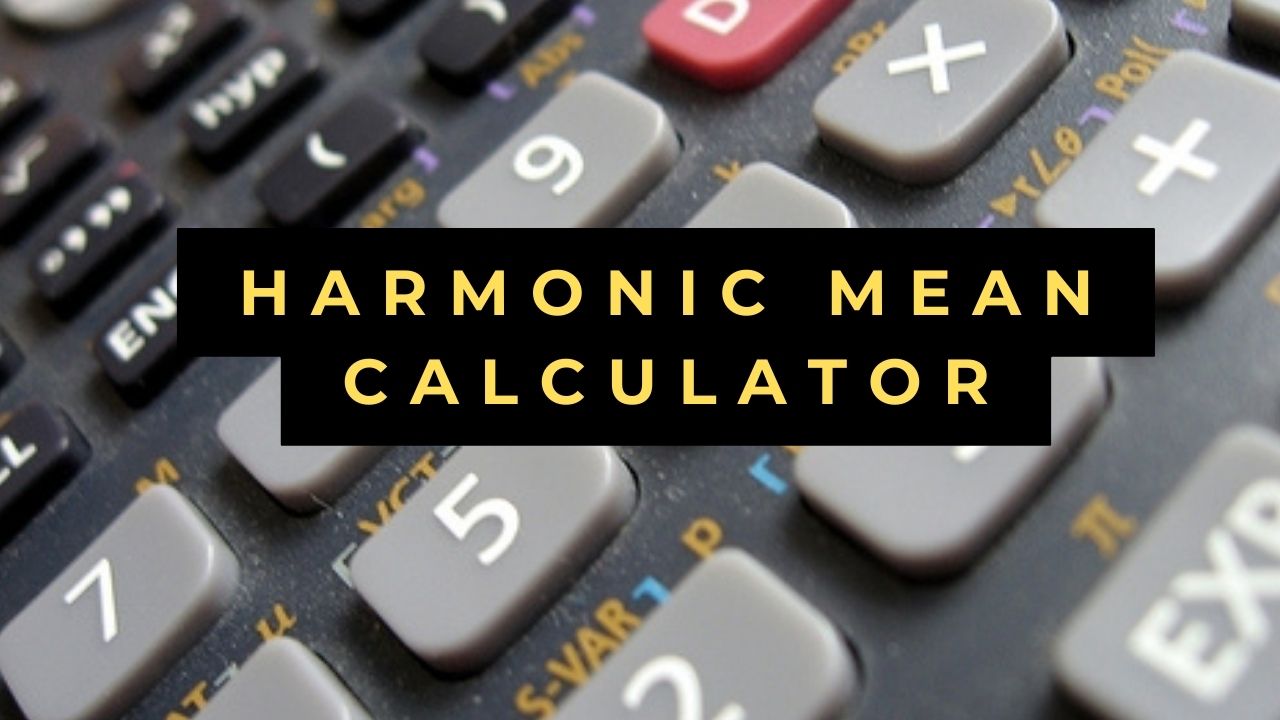Harmonic Mean Calculator
- Greater Than Less Than Calculator
- Graphing Linear Inequalities Calculator
- Graphing Inequality Calculator
- Graphing Functions Calculator
Harmonic Mean Calculator with Steps
Easily compute the harmonic mean of a set of numbers with the Harmonic Mean Calculator. Learn how to input data, perform computations, and understand the significance of harmonic mean. Simplify your mathematical calculations today!
Harmonic Mean Calculator
Welcome to our guide on calculating the harmonic mean using the Harmonic Mean Calculator. The harmonic mean is a mathematical concept that provides a measure of central tendency, particularly useful when dealing with rates, ratios, or proportions. In this article, we’ll explore how to use the Harmonic Mean Calculator to find the harmonic mean of a dataset, along with addressing common questions to deepen your understanding of this statistical measure.
Understanding Harmonic Mean Calculator
The harmonic mean of a set of numbers is defined as the reciprocal of the arithmetic mean of their reciprocals. Mathematically, if x1,x2,…,xn are the numbers in the dataset, the harmonic mean H is given by:
H=x11+x21+…+xn1n
The harmonic mean is particularly useful for averaging rates, proportions, or other quantities that are inversely proportional to each other.
Importance of Harmonic Mean
The harmonic mean is important in various fields, including:
- Finance: Calculating average returns on investments.
- Physics: Analyzing average velocities in systems with changing speeds.
- Engineering: Estimating average values in situations involving rates or proportions.
How the Harmonic Mean Calculator Works
Our Harmonic Mean Calculator simplifies the process of computing the harmonic mean of a dataset. You can input the numbers in the dataset, and the calculator will automatically calculate the harmonic mean based on the provided values.
Step-by-Step Guide to Using the Harmonic Mean Calculator
- Enter Data: Input the numbers in the dataset into the designated field, either manually or by pasting from a spreadsheet.
- Click Calculate: Initiate the calculation process by clicking the calculate button.
- View Result: Instantly receive the harmonic mean of the dataset.
Practical Applications
The harmonic mean finds applications in various domains, including:
- Finance: Determining the average rate of return on investment portfolios.
- Economics: Analyzing average prices or wages in situations with changing values.
- Transportation: Calculating average speeds in traffic or logistics management.
Advantages of Using the Harmonic Mean Calculator
- Efficiency: Saves time by automating the computation of the harmonic mean.
- Accuracy: Provides precise results for datasets of any size.
- Versatility: Applicable to a wide range of numerical datasets, making it suitable for diverse applications.
FAQs
Q: What is the significance of the harmonic mean?
The harmonic mean is useful for averaging rates, proportions, or other quantities that are inversely proportional to each other. It provides a measure of central tendency that is sensitive to small values in the dataset.
Q: How is the harmonic mean different from the arithmetic mean?
While the arithmetic mean averages the values directly, the harmonic mean averages their reciprocals. As a result, the harmonic mean is more influenced by small values in the dataset.
Q: Can the Harmonic Mean Calculator handle datasets with negative numbers?
No, the calculator assumes that all numbers in the dataset are positive since the harmonic mean is undefined for datasets containing negative numbers.
Q: When should I use the harmonic mean instead of other measures of central tendency?
The harmonic mean is most appropriate when dealing with rates, proportions, or other quantities that are inversely proportional to each other. It provides a more accurate representation of the average in such situations.
Q: Are there any limitations to using the Harmonic Mean Calculator?
While the calculator is versatile and efficient, users should ensure they input valid numerical values to obtain accurate calculations.
Conclusion
In conclusion, the harmonic mean is a valuable statistical measure for averaging rates, proportions, or other quantities that exhibit inverse proportionality. The Harmonic Mean Calculator offers a convenient way to compute the harmonic mean of a dataset, providing efficiency, accuracy, and versatility. By following the guidelines outlined in this article and utilizing the calculator’s capabilities, you can confidently analyze datasets and derive meaningful insights using the harmonic mean.

